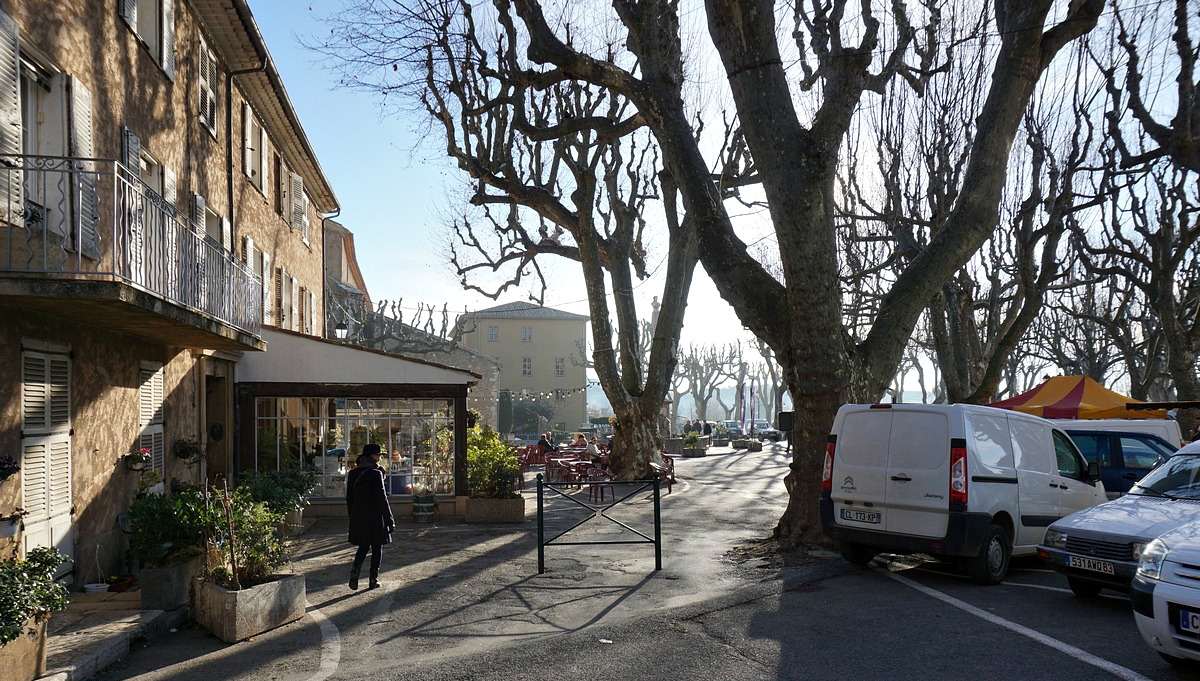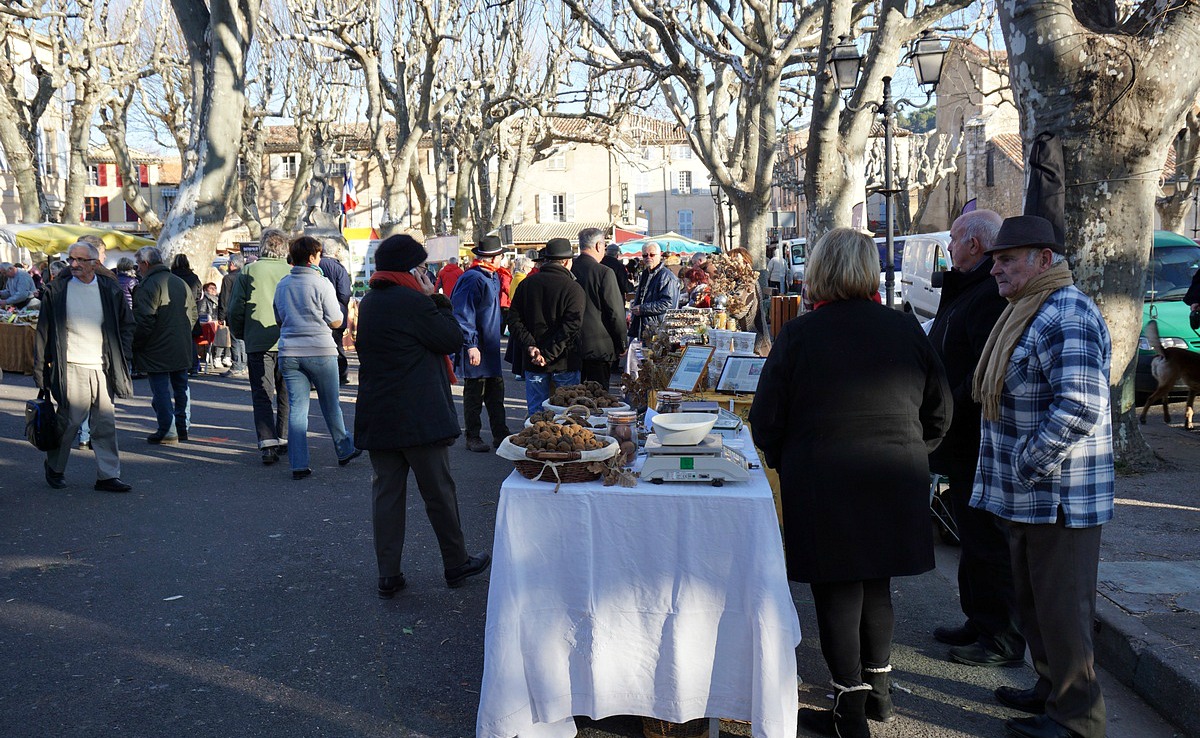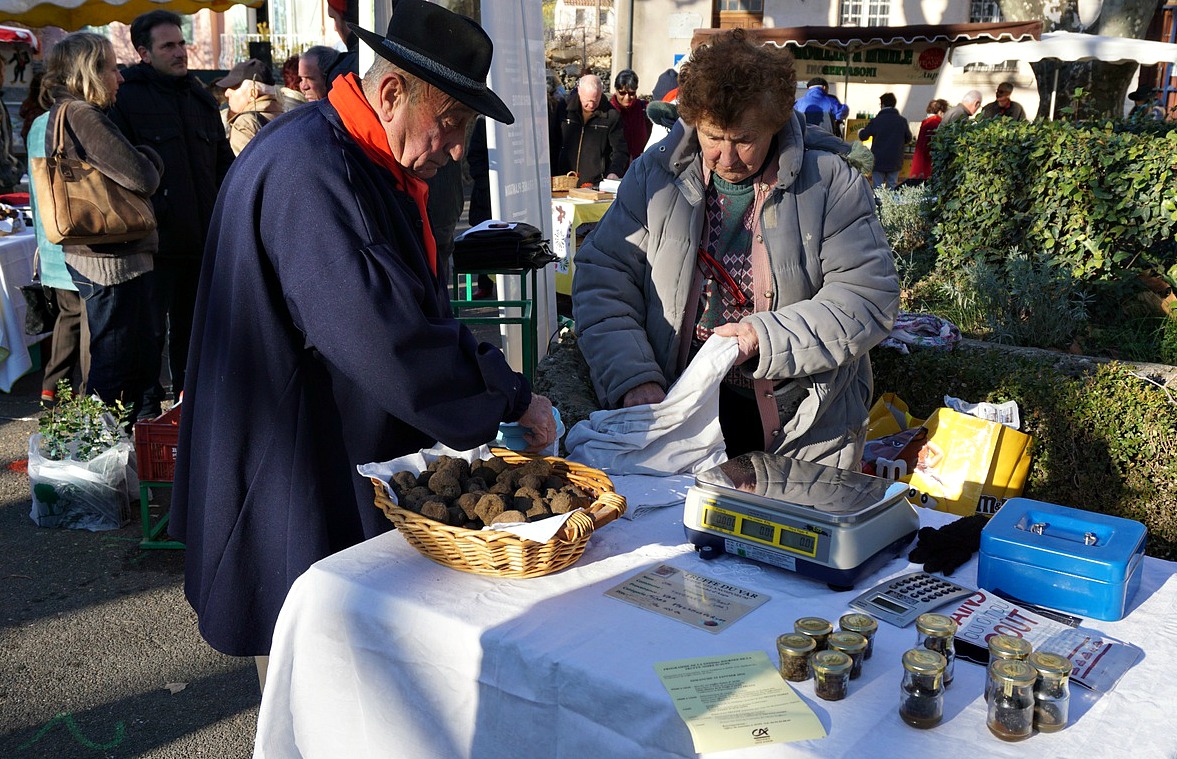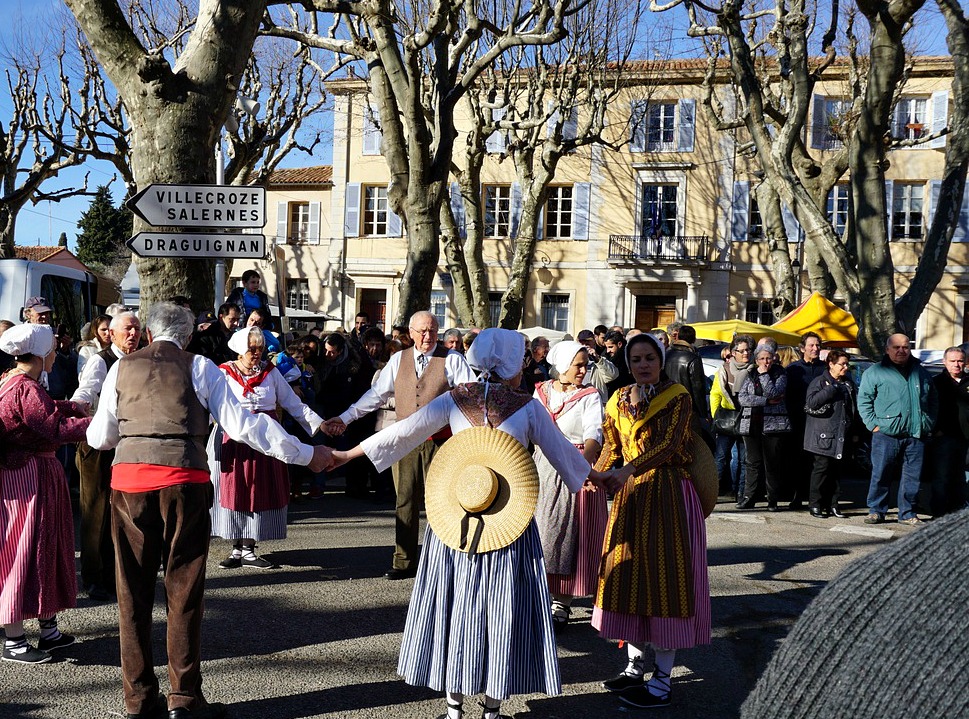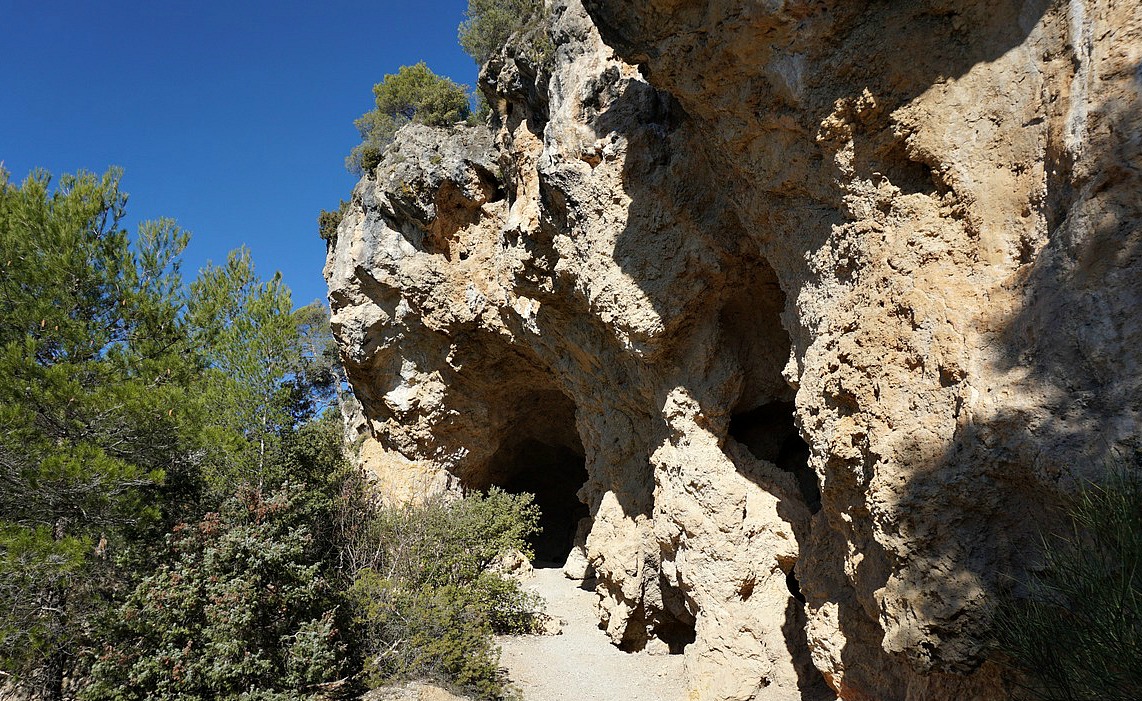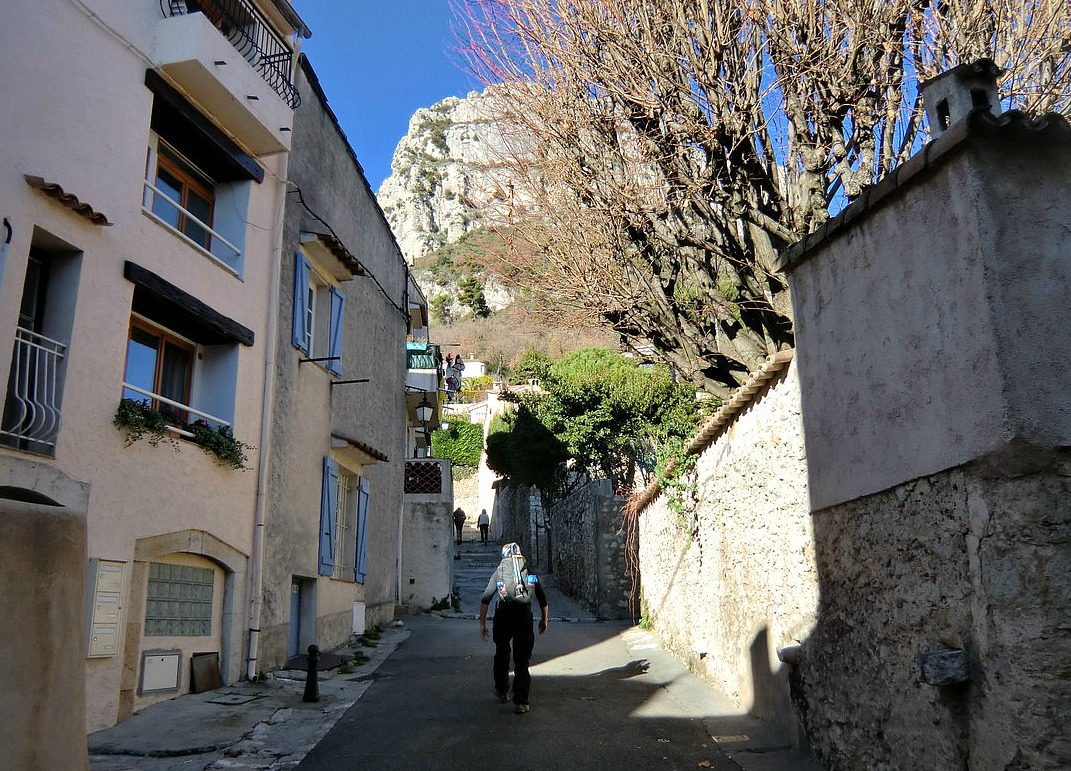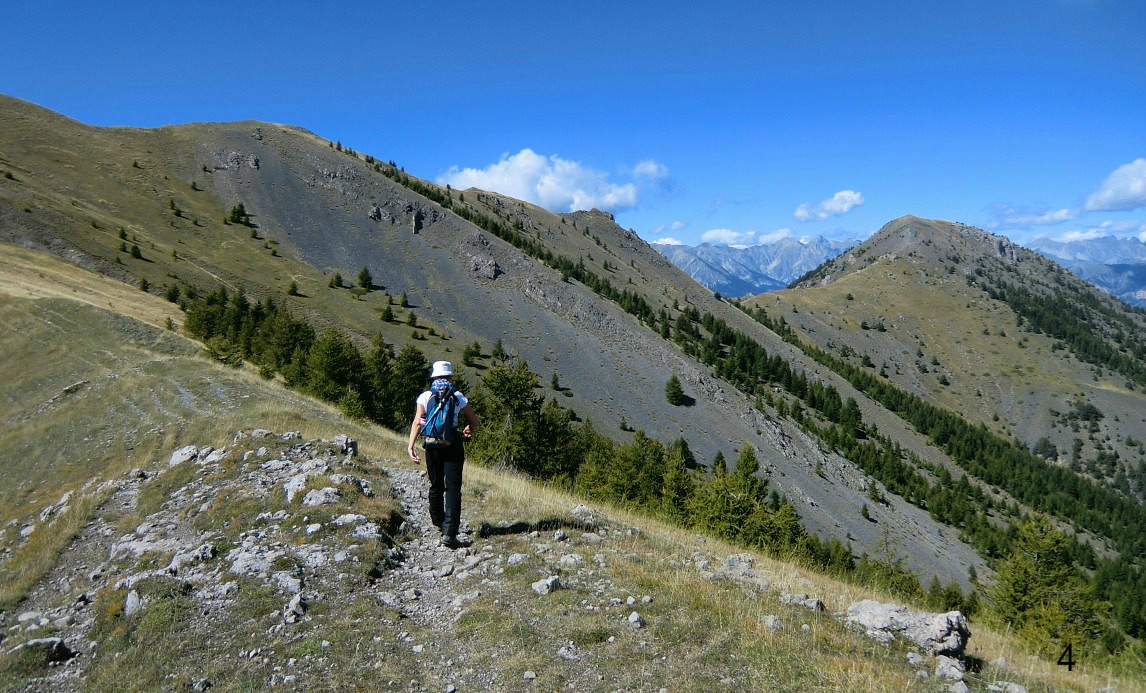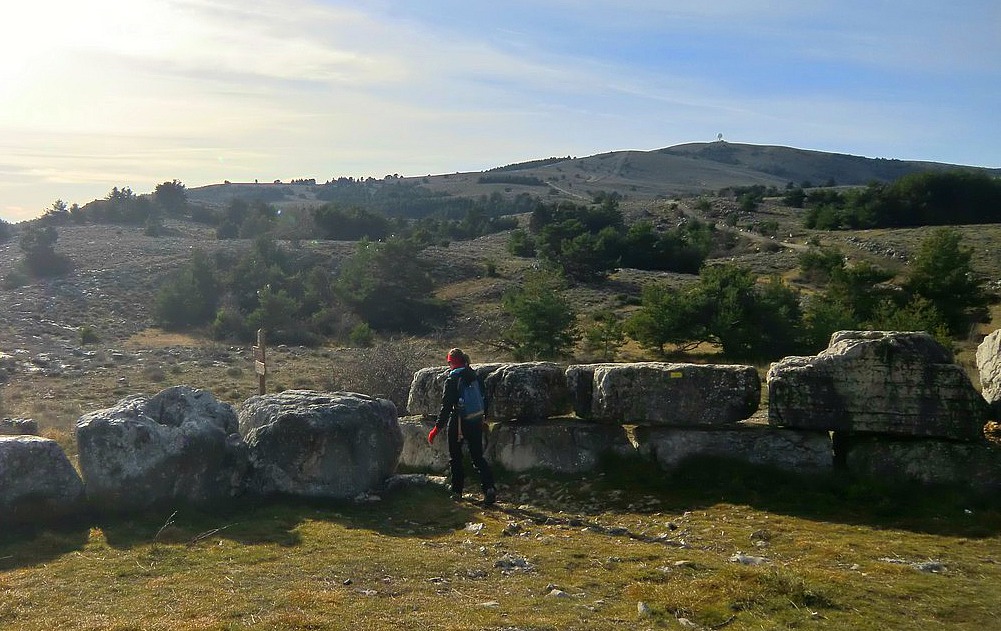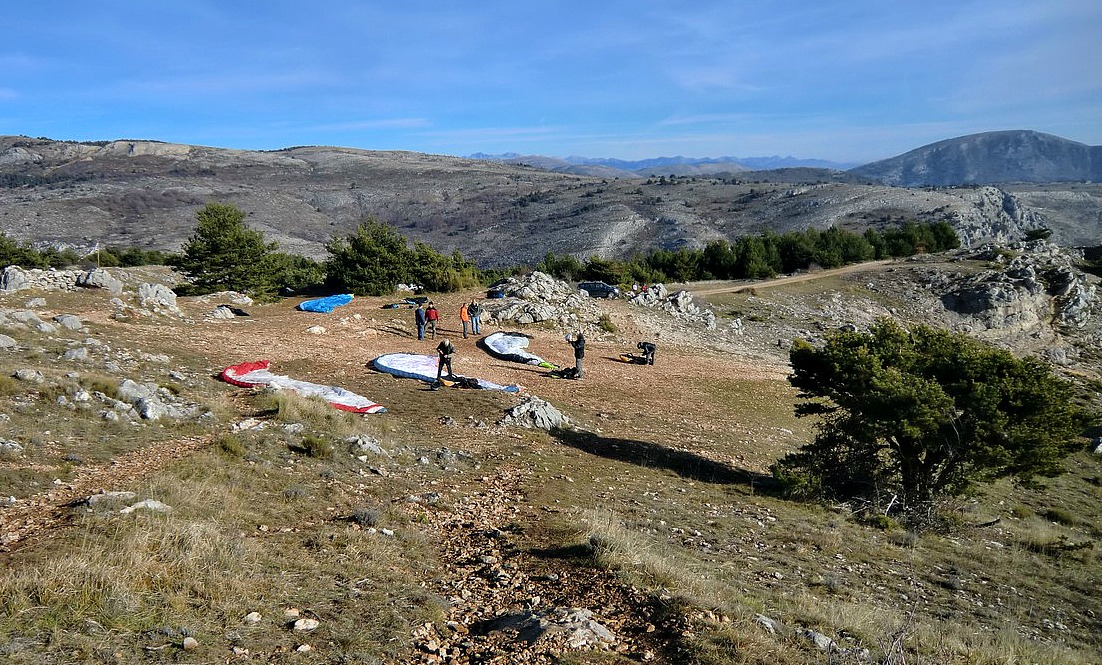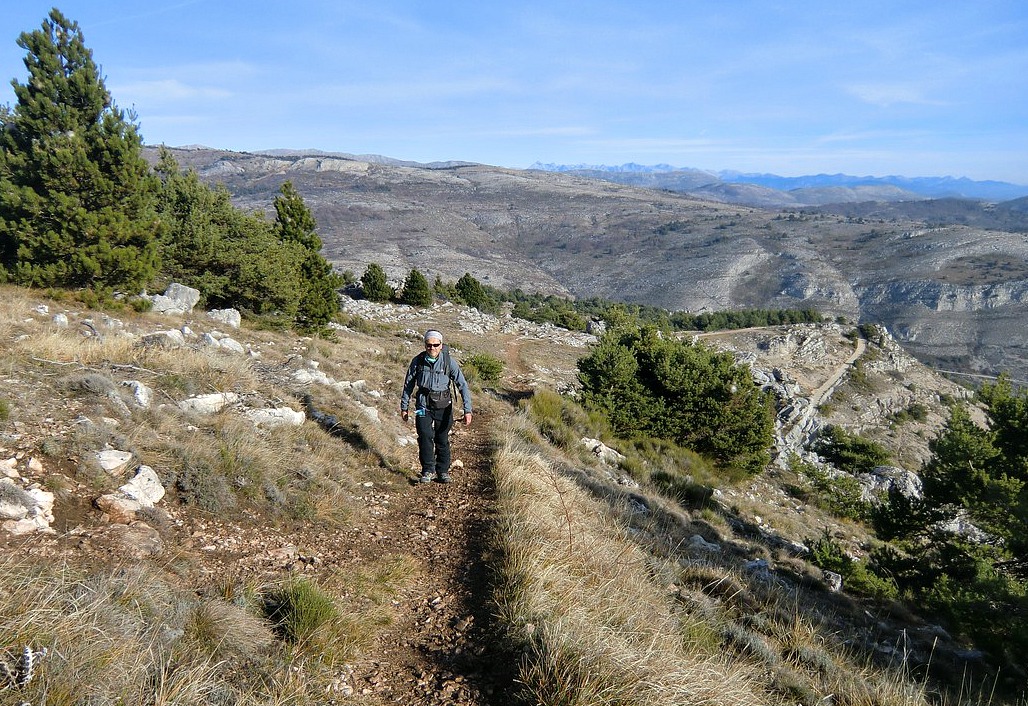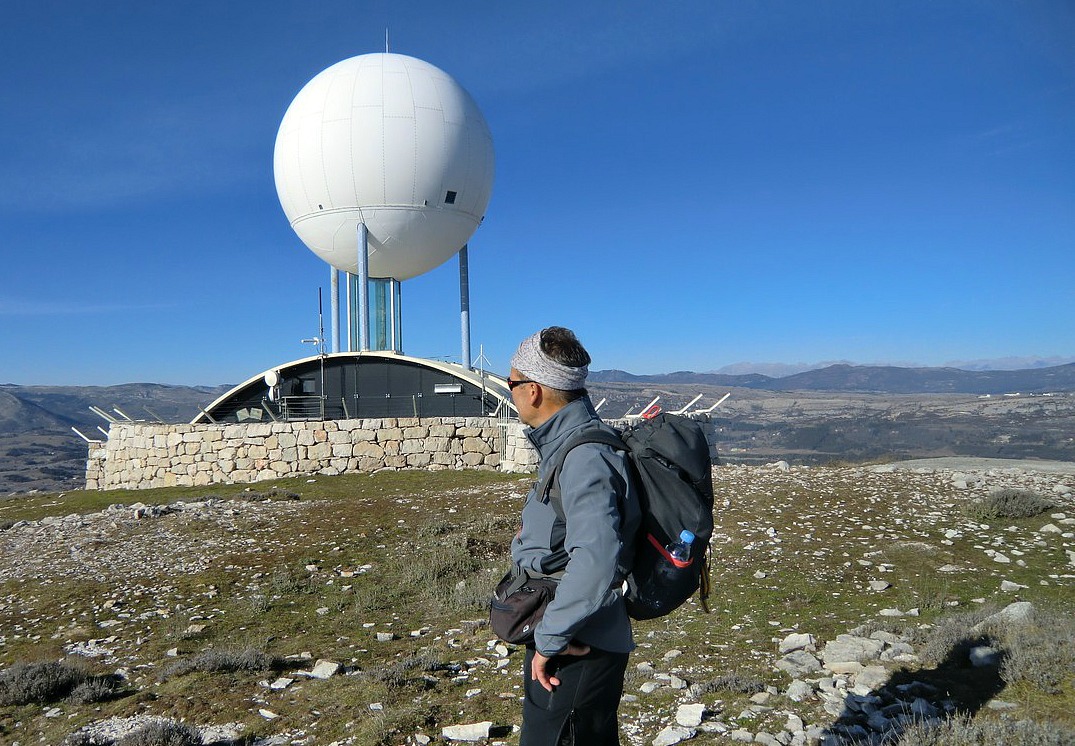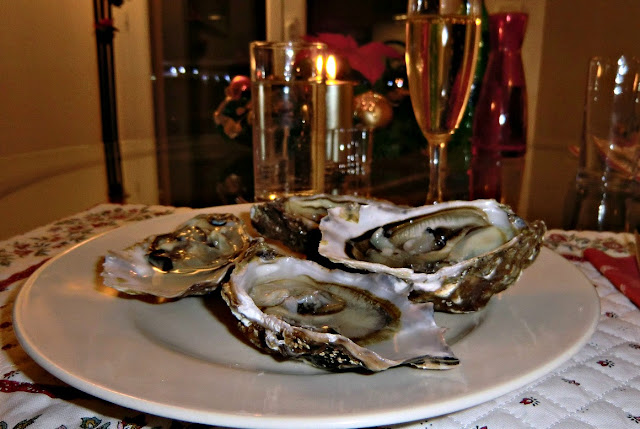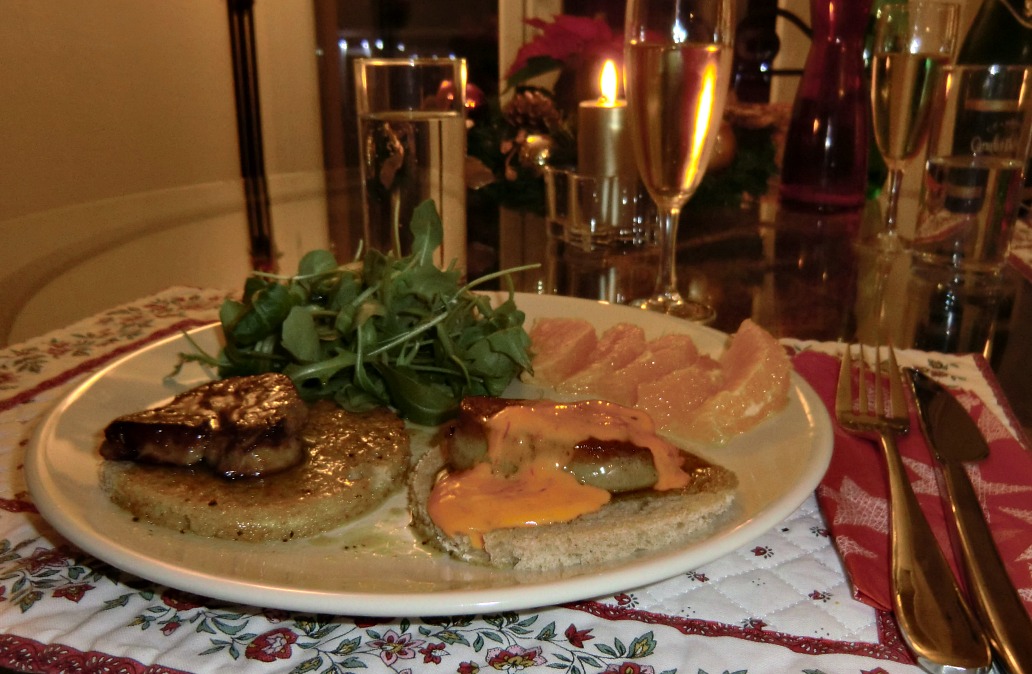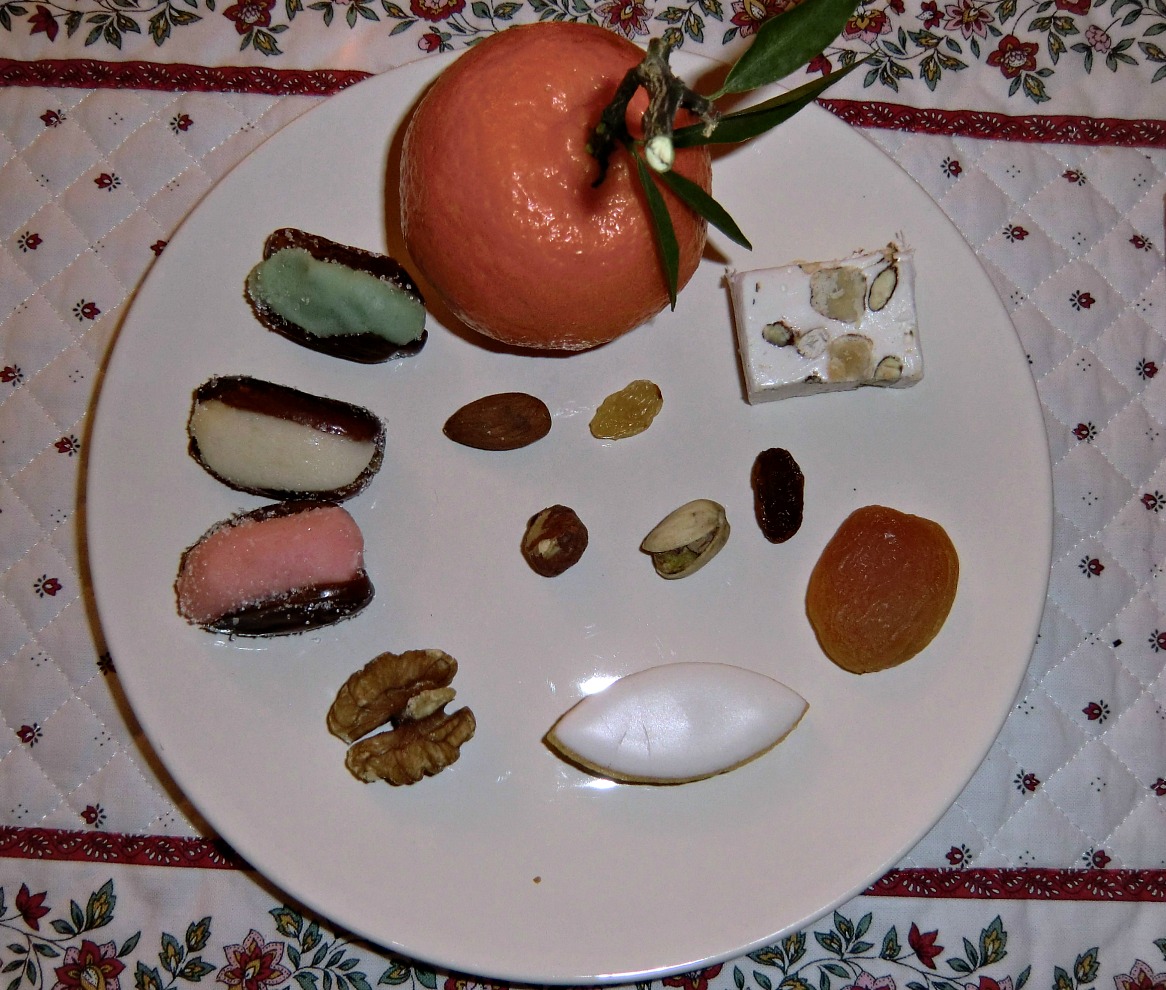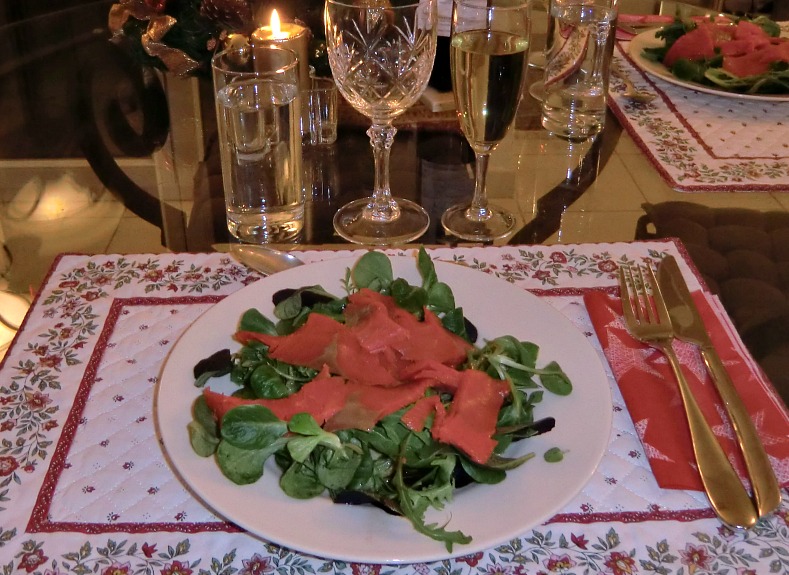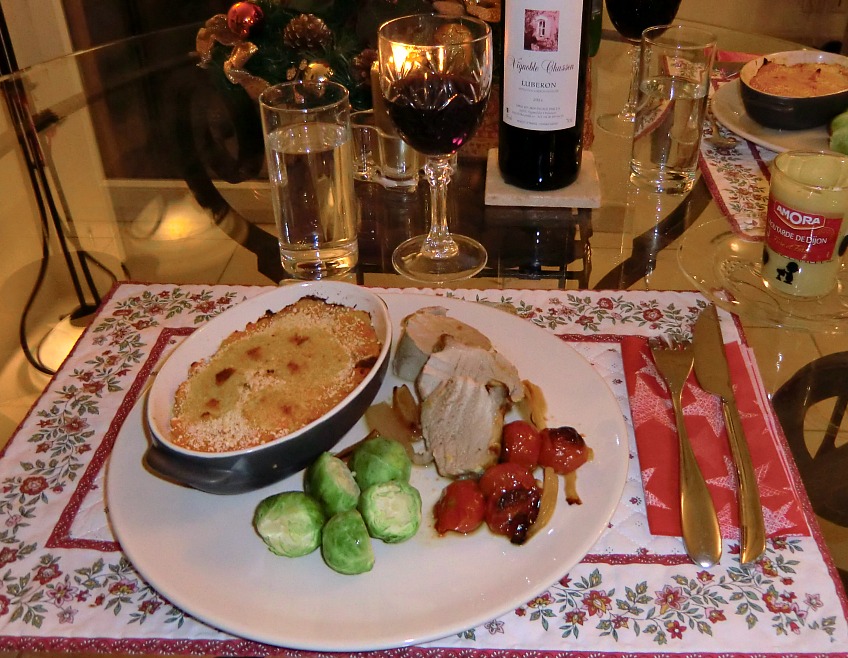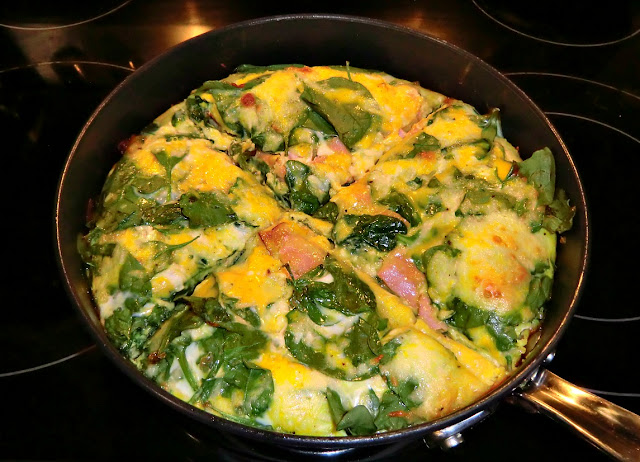
Aups (500m above sea level) is situated deep in Provençe in the Var Department. It is also one of the gateways to the Grand Canyon of Verdon, 16 km north of Aups as the crow flies.
Aups specialty is truffles. Every Thursday between November and mid-March there’s a truffle market where you can also buy other local products such as honey and olive oil.
La Maison de la Truffe -the Truffle House-was opened in November 2015. In its modern surroundings you can learn practical things about truffles; how to use them as a spice in recipes, how to clean and preserve them (less than a week in the fridge) etc.
One of the biggest local attractions is Aups Black Truffle Festival held every 4th Sunday in January. Because we were absolute novices when it comes to truffles, we were looking forward to discovering things around this precious fungus, and of course to tasting the truffle menu prepared by those who master the local traditions.
The morning of the 23rd truffle festival was cold with clear skies. The stands were already erected in Place Frédéric Mistral in front of the Mairie. Bare plane trees adorned the square. As the market was not yet in full swing the timing was perfect to view the stands as well as to do some shopping.
We tasted and bought some excellent fruity local olive oil. It will go perfectly with different salads. We later discovered that they had recently won three gold medals in Paris, and that Aups also holds olive oil festivals every March.
The day’s program started with truffle hunting dogs’ competition followed by a demonstration by a truffle hunting pig. They said that this pig, “Pipetto”, was the last working pig in this area. She was a hard worker, sniffing and digging one truffle after another.
After this, it was time to visit Maison de la Truffe.The visit was free because of the event, normally it costs 5€.
Video from the festival can be viewed here
The morning’s program ended with a colourful folk dance show arranged by a local folklore group. At noon, most people started looking for a spot for lunch. Many restaurants had rather overpriced long Sunday truffle menus, and many were queuing for cheaper and more informal lunches. As we had already booked a truffle menu dinner at our hotel, we too opted for a simple lunch, sitting outside in the chilly shade as the tables in the sun were all taken. After this, we had time for a walk in the forest above Aups to discover some caves.
Our dinner menu comprised:
Bruillarde de Truffe Noir, scrambled eggs with grated truffle on the top
The first course was followed by Filet de Boeuf, steak, or Magret de Canard, duck breast. Both were served with the same truffle sauce, and quite a lot of truffle had been grated on top of the meat to get a good taste of it.
Cheese and dessert concluded the dinner.
From the wine list we chose an excellent local red, Le Château Thuerry 2010
The truffle menu was substantial, and we were happy that we had made a walk to the caves in the afternoon!
Is the truffle taste then worth all this effort and price? Try it and make up your own mind.
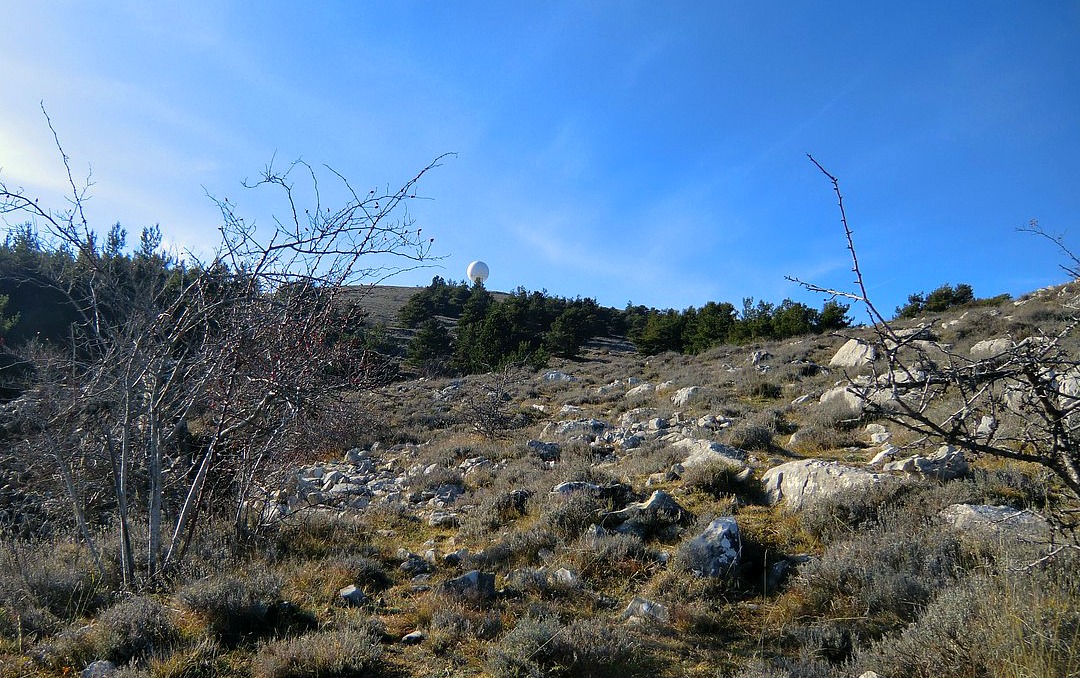
Sometimes an easy walk in fresh and clean air is all you want. This nature walk above the hilltop village of Gourdon (758 m) offers magnificent views on a clear day while the vertical climb is just 250 m.
The walk starts from the parking by Chemin des Claps at 1112 m altitude. From the roundabout at the entrance of Gourdon, take the RD12 road to Caussols. Continue about 5.5 km, then turn left and follow chemin des Claps about one km. From Nice, the driving time is about an hour. You’ll see a closed gate and a stone wall, and a narrow paved road behind it leading to the summit of Haut Montet (1335 m). The civil aviation radar dome on the top is clearly visible. In fact, the dome can be seen from many places on the coast. This is also the highest point of the walk.
Immediately left of the closed gate there’s an opening in the wall for walkers. Follow the “Circuit du Haut Montet 2h30” signposts. The trail (yellow marks) first takes you to a ridge frequently used by paragliders. The trail ascends gently along the ridge before turning right joining the paved road up to the summit. It is an easy trail but caution should be exercised in poor visibility, and of course in icy and wintery conditions.
We did the walk on a clear albeit a bit hazy day. When we reached the summit, the Mercantour peaks were actually better visible than the coast.
Descend back to the starting point along the paved road.
Duration: 2h30
Map: IGN Cannes-Grasse TOP 25 no 3643 ET
Map image courtesy of Google Maps










